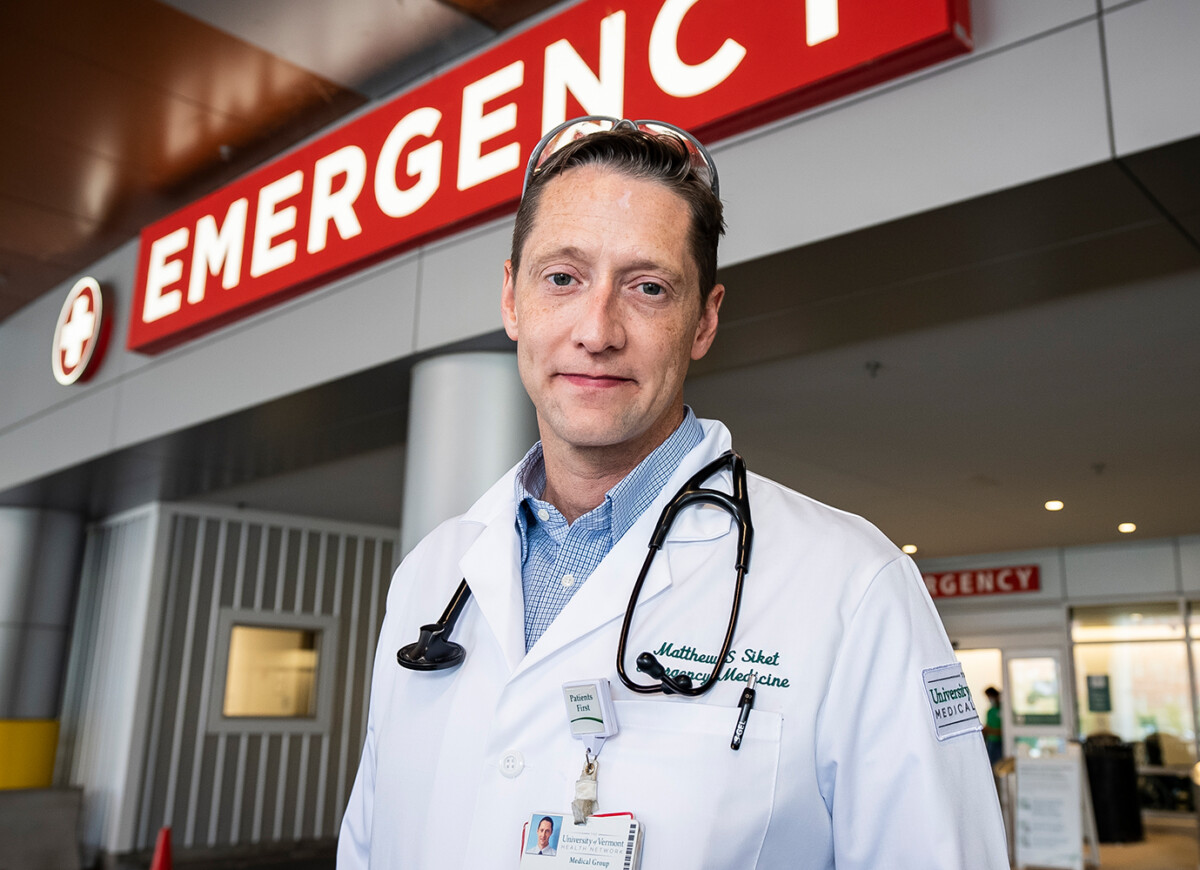No Admission: Preventing Hospital Stays Before They Happen

Matthew Siket, MD, could see his patient was struggling to breathe.
Dr. Siket, a veteran emergency room physician at The University of Vermont Medical Center, knew that the man — older and with Chronic Obstructive Pulmonary Disease (COPD) — needed a supply of oxygen; beyond that, it wasn’t immediately clear what would be needed. Observing his condition over time would likely provide the answer, but that required admission to UVM Medical Center’s inpatient unit.
Five hours after being admitted — his condition much improved — the man wanted to go home and was released from hospital care.
Most physicians would call this a positive outcome – and in one sense, Dr. Siket doesn’t disagree. The patient got the care he needed, was able to return home much sooner than anticipated and his hospital bed was now available for another patient.
Still, Dr. Siket was focused on ways that might avoid a hospital admission altogether. Why not allow a patient like this one to be seen, treated and observed outside of the hubbub of the main Emergency Room, and if additional treatment was not needed, be able to go home without being officially admitted as a patient? Such an approach would be easier on the patient, while also taking some of the burden off of the already-crowded Emergency Department and hospital in-patient units.
This concept — ‘Emergency Medicine Comprehensive Observation,’ also known as an ED Observation Unit — isn’t new; in fact, it’s considered a “best practice” by the American College of Emergency Physicians. But it is only used by one-third of hospitals in the United States.
Clinicians like Dr. Siket say it has significant benefits for patients with conditions such as pneumonia, asthma or chest pain because they require medication and observation to treat. Conditions like these typically take hours for symptoms to improve, but often don’t actually require admission to a hospital bed for inpatient care, making them a perfect candidate for an ED Observation Unit.
As an ED provider, this model ticks all the boxes. You want your patients to have access to care and efficient care delivery, so you’re not devoting all your time to one patient while others are sitting in the waiting room. And you want to preserve that fast turnover space in your ED, while also having a lane for patients who might need to be on a bit of a slower track.
Dr. Siket
Dr. Siket explains that this observational care model, which is currently in its pilot phase at UVM Medical Center, could someday be expanded to include care at home for patients with issues such as skin and soft tissue infections. Those patients could receive a diagnostic workup in the Emergency Department, and then return home where ED providers can virtually monitor them using the same telehealth technology that allows primary care providers to conduct routine checkups and other visits virtually.
But that’s in the future. In the meantime, Dr. Siket says he and his team are using a step-wise approach to getting the program up and running, starting small with the pilot program and using a designated part of the Emergency Department instead of waiting for a separate unit to be constructed.
“ED Observation can be a lot of things to a lot of people,” says Dr. Siket. “For ED teams, it’s that flex capacity – that pressure release valve. For specialist providers, it’s expanding collaborative care and efficiency while keeping their patients out of the hospital. For patients, particularly those with mental health needs, it’s a way to focus on therapeutics and intervention, and prevent them from feeling like they are in limbo.”
Dr. Siket says this pilot program is a critical first step toward a more efficient way to care for some patients, allowing close collaboration with mental health providers and clinical specialists and leaders.
Observation is a status, not a geography. Having a dedicated ED Observation Unit that’s administratively run by ED staff is the most high-value way to deliver this care – and we’re moving in that direction. But just because we don’t have a separate unit doesn’t mean we can’t provide the service.
Dr. Siket
